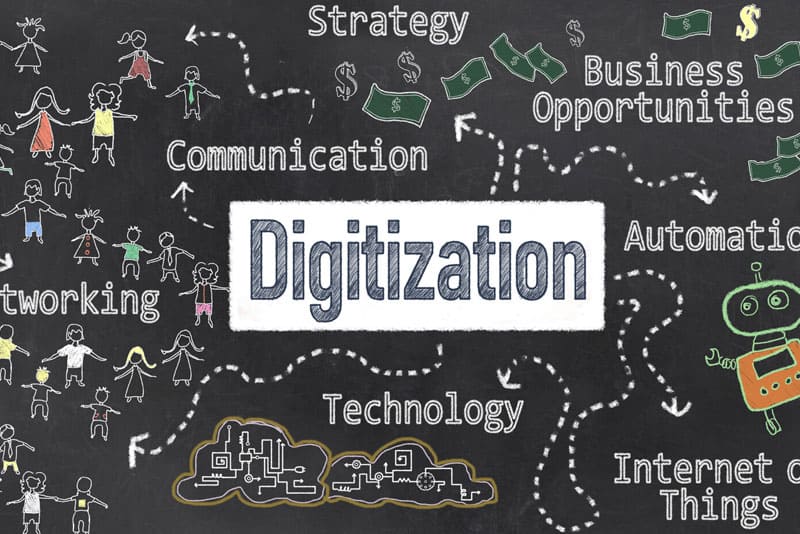The world has become increasingly dependent on digital transformation and many academic and non-academic organizations are in the process of digitization with the help of document scanning services. Digitization streamlines record management and saves money that would be wasted on managing paper records. It enables valuable records to be shared within and across organizations and people. You can convert photographs, court documents, manuscripts, printed texts, historic records and other physical documents int electronic format and ensure long-term preservation. Digitizing historic materials preserve the originals and it becomes useful for scholarly researches and references. Digitization also provides accessibility, flexibility and manipulability to useful resources. Digitized materials can be placed online and helps to minimize the handling damages for publicly available documents.
Advantages of Digitization
- Cost-effective: Handling a lot of physical documents is a daunting task and it takes too much time and money to store these paper documents. Digitization is a one-time investment that allows organizations to save money by allowing employees to focus more on their work rather than wasting time locating and storing paper documents. With physical records, there is an increased chance for data loss. The cost of losing vital data is very high. According to the 2018 Cost of a Data Breach Study by Ponemon, the average cost of each stolen or lost record that contains confidential or sensitive information is $148, an increase of 4.8% year-over-year. Digitizing helps organizations to preserve their data and handle them properly cost effectively.
- Improved efficiency: Managing paper documents can slow the productivity of your team since they have to move around and try locating the paper documents. Dealing with all the paper by hand can take several hours and it is prone to human error. But by digitizing the paper records, employees can process the documents and deliver them on time with top notch accuracy. Digitally converting all data helps to store all the documents in a safe place, so that it makes accessing and retrieval of data easier.
- Saves physical space: Physical space for your business is a valuable commodity. Office space can be costly and for maintaining physical records, you will need room for the records, plus a scanner and space for your employees to scan. All of this could add up quickly and this makes it an expensive affair. The wrong use of space could lead to disorganization and slowed retrieval processes, which then affects your accuracy and efficiency. Digitizing microfiche and other old documents helps you to cut down on office space costs and use your space for projects that bring more value to your organization.
- Modernizing your organization: Digitizing organizational records helps businesses to save money, employees to be more productive, improve customer satisfaction with faster service and modernized business processes.
Preserving Old Industrial Records
According to an article by The Weirton Daily Times, employment records from the old Beech Bottom steel facility are being preserved. Beach Bottom Industrial facility, Ohio – the industrial park is a 480,000 square foot facility that is spread across 60 acres of land. This facility has been a part of a century and has been owned by many different steel companies. The current owner of this facility is Business Development Corp. of the Northern Panhandle. They found many old records with a great deal of information such as the names, birthdates and addresses of those who worked at the plant. They were employees who came from Steubenville, Mingo Junction, Brilliant, Bellaire and, of course, Beech Bottom, as well as other communities from across the Tri-State Area. A few of the records show when those workers came to the United States as some of the employees were immigrants.
All of these old employee records are being digitized by Erika Grubbs, a local genealogist who works at the Schiappa Branch of the library. Once the document scanning process is complete, the information will be uploaded to the Digital Shoebox, a database of digitized books, photos and documents that have been collected by libraries across South-eastern Ohio. These digitized copies will be made available online.
An index will be completed and all information about the employees from the 1930s, ’40s and ’50s that are in the possession of the Brooke museum will be scanned and added to the digital collection. After completing the digitization process, the records will be turned over to the museum so that these records can be accessed by the employees. Preserving these documents is not only useful from the historical perspective but from that of those who are interested in learning more about the lives of their relatives.
Conversion of documents into digital form becomes easy with support from a reliable document scanning company. They are professionals in handling fragile and old documents without causing any damage. They can convert large volumes of documents without losing accuracy and clarity.




